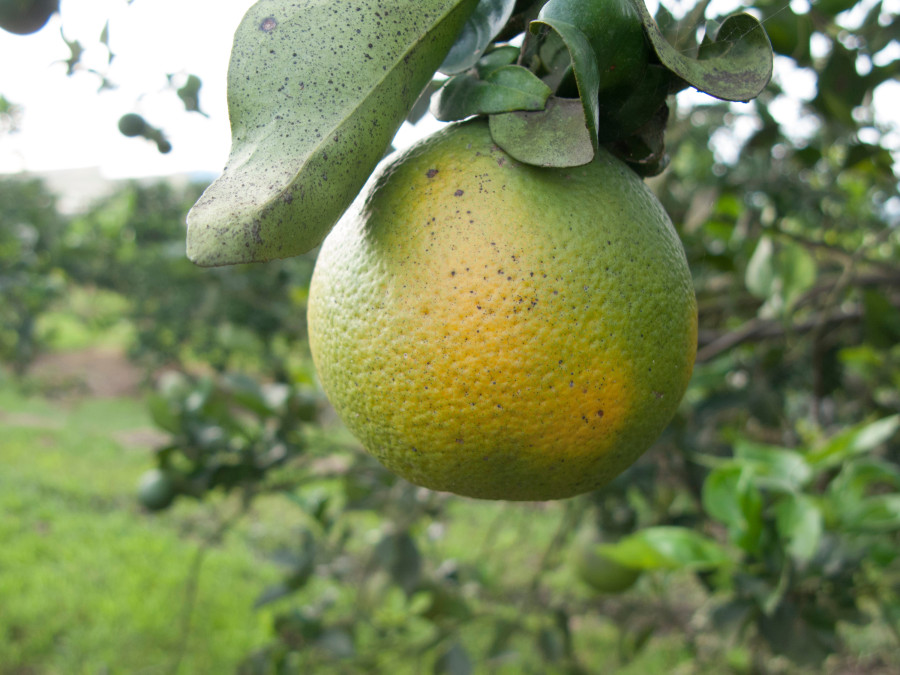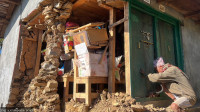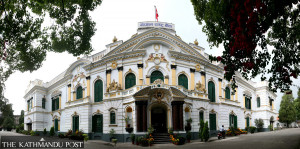Columns
An incurable disease has been invading citrus orchards
The fruits on the affected trees are smaller, of poor quality, and drop prematurely.
Sameer Pokhrel
Citrus fruits are among the major fruits cultivated in Nepal. Mandarin orange, sweet orange, lime, lemon, pomelo, acid lime, rough lemon, citron and grapefruit are successfully cultivated in various regions. Even then, the country has to import fruits worth Rs20 billion annually with citrus fruits accounting for a significant part. While the country is trying to achieve self-sufficiency in citrus fruits, a challenge in the form of a bacterial disease called Huanglongbing, or HLB, has emerged in recent years which poses a threat to orchards.
Also known as citrus greening, HLB has been decimating citrus orchards in many parts of the world. The disease is transmitted by an insect vector named Diaphorina citri (citrus psyllid). The affected plants show an asymmetrical blotchy mottling of the leaves and chlorosis resembling nutrient deficiencies. The fruits on the affected trees are smaller, of poor quality, and drop prematurely. The small brownish insect, Diaphorina citri, feeds on new shoots and leaves and transfers the HLB-causing bacteria from affected plants to healthy plants.
Urgent action required
Huanglongbing is a devastating disease that can spread very quickly. In Florida, the United States, citrus production plummeted from 8 million to 3.5 million tonnes in 2017 after its confirmation in 2005. Despite numerous efforts, no cure for HLB has been discovered. In Nepal, citrus accounts for about 36 percent of the total fruit production. In the past six years, citrus productivity has declined from 11.2 tonnes per hectare to 8.82 tonnes per hectare. If the spread of HLB remains unrestricted, citrus orchards in Nepal are most likely to face a severe crisis in the future.
The bacteria was first noticed in Nepal in 1968. It is suspected that the disease entered the country while introducing planting material from India to the research station in Pokhara. Test results for Huanglongbing are already positive for major citrus producing districts like Kaski, Syangja, Tanahun, Lamjung and Dhading. It is correctly predicted that HLB has already reached most of the citrus orchards in the nation.
Managing HLB has been a challenging task for growers worldwide. One of the most important management strategies is controlling the psyllid vectors. Chemical insecticides are effective in controlling the psyllid population; however, it is necessary to understand the mode of action of the chemicals used in the orchard and rotate materials to avoid the development of resistance.
To isolate the psyllid vectors from healthy plants, physical barriers like individual protective screens are being successfully introduced. Mountains can play a significant role in preventing psyllids from spreading from one region to another. Many countries have also successfully introduced Tamarixia radiata, which is an insect predator that preys on the citrus psyllid. As a country with varied ecological conditions and regions demarcated by mountains, Nepal should investigate the effectiveness of beneficial insects such as Tamarixia radiata in different citrus producing regions.
Management practices like the controlled use of fertilisers and irrigation scheduling, eliminating infected citrus trees and other hosts of the pathogen could support the long-term health and productivity of citrus trees. Researchers have demonstrated that different rootstocks perform differently under Huanglongbing endemic conditions. Exploring the potential of wild, as well as new rootstocks cultivars that can better tolerate HLB, could sustain citrus production in the presence of the disease.
Global challenge
Huanglongbing is a global challenge and there are many Nepali scientists and researchers working worldwide to develop solutions. Nepal can take advantage of their involvement and ensure their active role in bringing longevity to the citrus industry. A strict quarantine policy is essential to restrict the inflow of exotic plants and insect pests. Many exotic plant species and diseases are entering the country because of a liberal quarantine policy and wreaking havoc. It is of utmost importance to scrutinise plant materials before they are allowed to enter the country to prevent unprecedented attacks of diseases like HLB.
Despite its high potential, Nepal has had to import citrus fruits. Imports are likely to soar if the severity of HLB remains unchecked. In an economically fragile country like ours, this incurable disease can annihilate citrus production, snatching one of the major sources of the agricultural economy. It is high time scientists and industry stakeholders worked together to combat this disease. There should be a collaboration between citrus growers, scientists at the Nepal Agriculture Research Council, government officials, agriculture universities and related stakeholders to sustain Nepal as a hub for citrus production. Nepal has the potential to grow citrus in varied geography—from the plains to the mountainous regions. There is much to explore regarding citrus production in Nepal, yet what should the major focus right now is combating Huanglongbing.
Pokhrel is a graduate research assistant at the University of Florida.




 10.12°C Kathmandu
10.12°C Kathmandu















